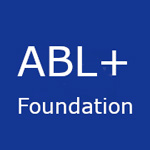There are two “variants” of Familial Hypobetalipoproteinemia (FHBL). In heterozygous FHBL only one allele of the ApoB gene is defective. But in homozygous FHBL both alleles of the ApoB gene are defective (see below for more information on homozygous FHBL).
About Heterozygous FHBL
In heterozygous FHBL patients produce lower than normal lipopproteins due to having one defective allele in their ApoB gene. Because the body is still able to produce lipoproteins it’s possible that someone with heterozygous FHBL may never know they have it. But if heterozygous FHBL is suspected there are tests a doctor can perform to try to reach a diagnosis:
- A patient’s lipid profile can be developed using blood tests
- A lower than normal cholesterol level could be a sign of heterozygous FHBL
While it’s possible that a person could have heterozygous FHBL and not be aware of it, therefore not noticing any symptoms, there is a possibility of developing fatty liver disease (steatosis).
About Homozygous FHBL
In homozygous FHBL both alleles of the ApoB gene are defective. This affects a patient’s ability to absorb fat from their diet due to a defect in the ApoB gene. This may result in a number of symptoms similar to ABL, including:
- Vomiting or diarrhea
- Foul smelling or pale colored stool
- Poor growth and development -may be referred to as ” failure to thrive”
- Trouble digesting fatty foods
Other possible signs and symptoms
As patients get older other symptoms may develop due in large part to the vitamin deficiencies this illness causes.
- Poor balance (Ataxia)
- Vision loss (similar to Retinitis Pigmentosa)
- Fatty liver
- Other potential neurological or vision problems
Signs and symptoms doctors can test for
In a clinical setting there are some signals that a child with Homozygous FHBL would exhibit through observation and some simple clinical tests and markers.
- Acanthocytosis (irregularly shaped red blood cells)
- Extremely low cholesterol level
- Extremely low or undetectable level of Vitamin E
- Extremely low levels of Vitamins A, K, and D
- Low levels of Triglycerides
Getting a Diagnosis
A diagnosis of Homozygous FHBL typically begins with a clinical examination and tests such as a lipid profile, vitamin level testing, and examining red blood cells under a microscope, looking for an irregular shape (Acanthocytosis). Further tests may include a genetic profile specifically examining the ApoB gene, an intestinal biopsy, an electromyography (EMG), and an ophthalmological eye exam. A detailed family history could also be useful in arriving at a diagnosis
Common Misdiagnoses
Homozygous FHBL could be misdiagnosed as a number of other conditions including vitamin deficiencies, Celiac Disease, Freidreich’s Ataxia, Retinitis Pigmentosa, Chronic Pancreatitis, or other lipid metabolic disorders.
Possible Treatment Options
Unlike many rare diseases, Homozygous FHBL is treatable. Possible treatments and therapies may include, but are not limited to:
- Adherence to a very low fat diet
- Administration of very high doses of Vitamins A, E, K, and possibly D
- Regular Ophthalmological Exams
- Electrocardiograms (ECG)
- Nerve conduction studies
Letters Regarding Vitamin Therapies
Below are letters written by our medical advisory board that can be given to doctors or insurance companies illustrating the need for vitamin therapies in high doses to treat these illnesses.
Published Articles Related To FHBL
Below are some articles published in medical journals and other media relating to FHBL
- New Classification and Management of Abetalipoproteinemia and Related Disorders – Published by the ABL+ Foundation
- Vitamin E and oxidative stress in abetalipoproteinemia and familial hypobetalipoproteinemia ScienceDirect article
- Association between familial hypobetalipoproteinemia and the risk of diabetes – PubMed article
- Novel APOB mutation in familial hypobetalipoproteinemia – PubMed article
- Homozygous familial hypobetalipoproteinemia caused by APOB gene variations – PubMed article
- Familial hypobetalipoproteinemia: genetics and metabolism
- Clinical and biochemical characteristics of individuals with low cholesterol syndromes – A comparison between familial hypobetalipoproteinemia and familial combined hypolipidemia – ScienceDirect
- Familial Defective Apolipoprotein B and Familial Hypobetalipoproteinemia in One Family – Two Neutralizing Mutations – Journals of Internal Medicine
FHBL On The Web
Below are websites with more information about Familial Hypobetalipoproteinemia
- National Institutes of Health (PubMed)
- MedicinePlus
- NIH Gene Reviews
- Orphanet Journal of Rare Diseases
- ScienceDirect
Read Patient Stories
Here are some stories about Familial Hypobetalipoproteinemia patients and their caregivers.


